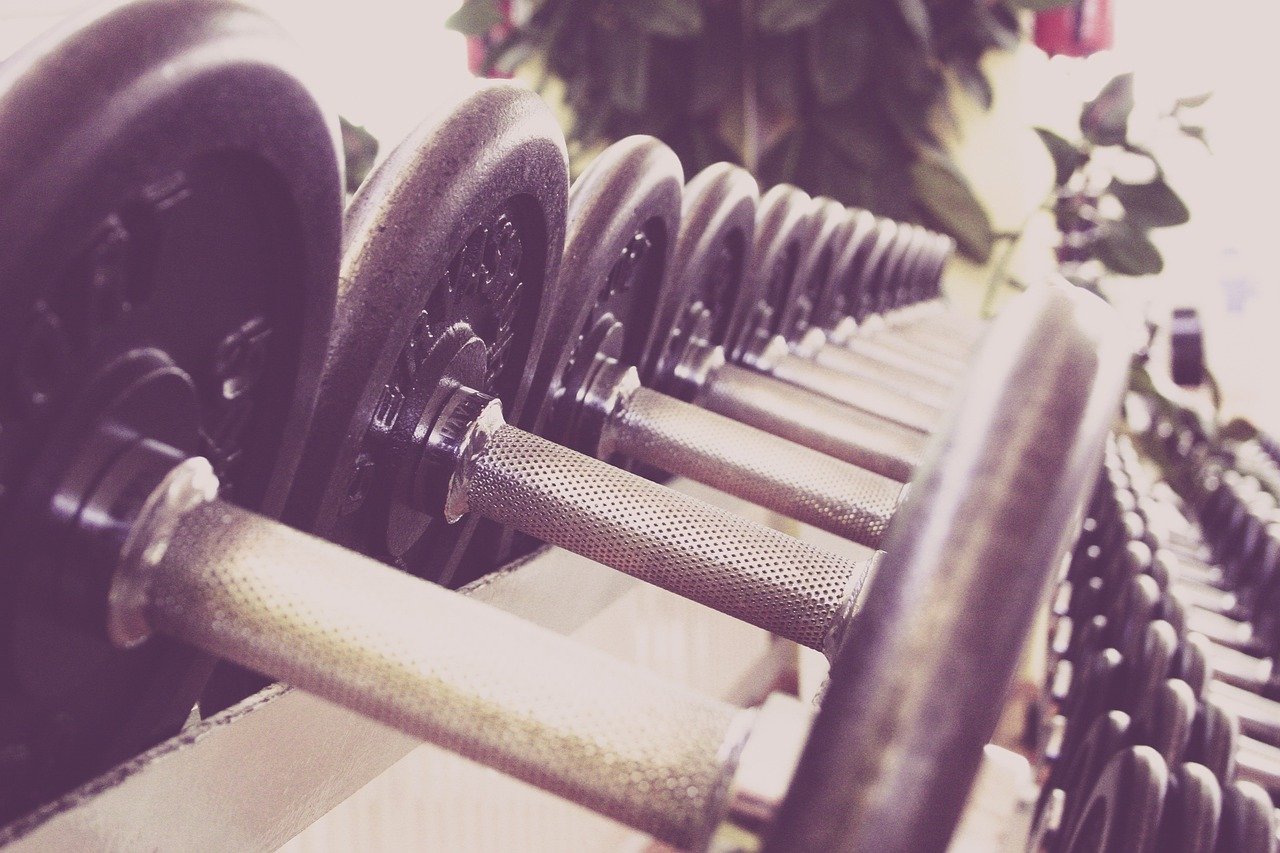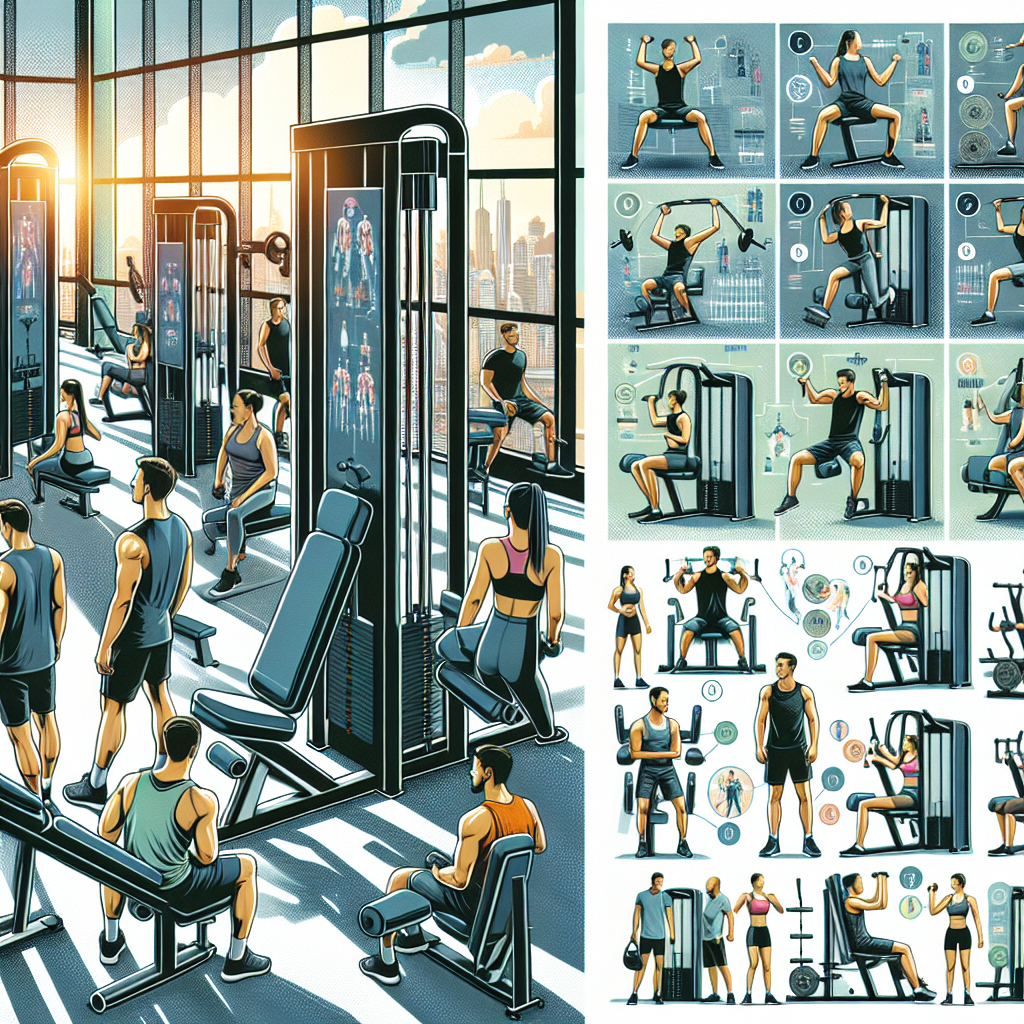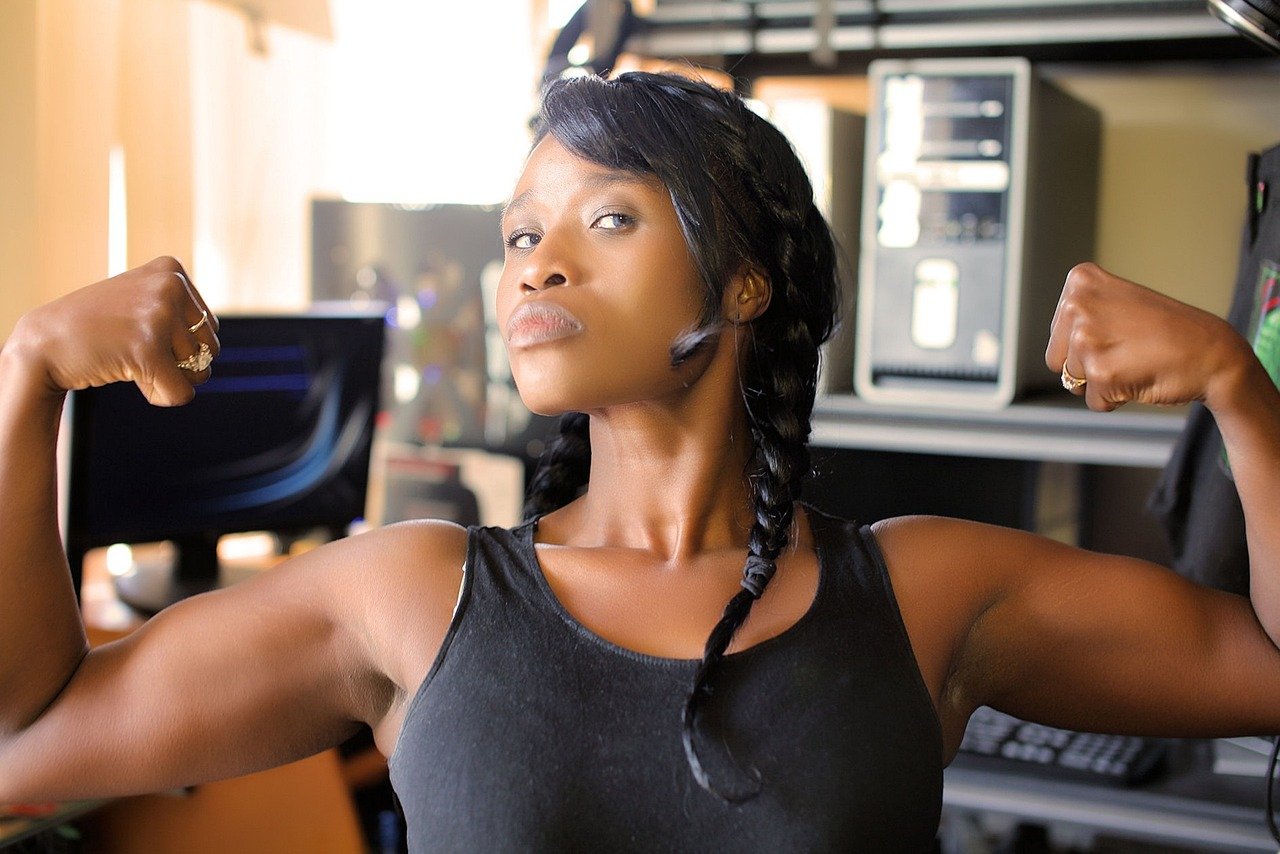The article “Highlighting the Key Features of Gym Weight Machines” provides a comprehensive overview of modern gym weight machines, with a focus on their key features. It explores the various types of machines available and compares their costs, making it easier for readers to make informed decisions about which machines would best suit their fitness goals. By highlighting the summary of each machine, this article aims to assist individuals in selecting the most suitable option for their workout routines.

Overview of Gym Weight Machines
Introduction to Gym Weight Machines
Gym weight machines have become an integral part of fitness centers, offering individuals a comprehensive way to engage in strength training and cardiovascular exercises. These machines are designed to target specific muscle groups, providing resistance and promoting muscle growth and development. With their adjustable settings, safety features, and various exercise options, gym weight machines offer users a convenient and efficient way to achieve their fitness goals. This article will provide an in-depth analysis of Different types of gym weight machines, highlighting their benefits, costs, and key features.
Benefits of Using Gym Weight Machines
Using gym weight machines has several advantages for individuals looking to improve their overall fitness levels. Firstly, these machines provide controlled movements, minimizing the risk of injury compared to free weights or other workout equipment. With adjustable weight resistance options, users can gradually increase the load to challenge their muscles as they progressively get stronger. This adaptability allows individuals of all fitness levels, from beginners to advanced athletes, to use gym weight machines effectively. Additionally, these machines are designed to target specific muscle groups, ensuring that users can focus on areas they want to develop or strengthen. Lastly, gym weight machines provide a user-friendly interface and controls, making them accessible to individuals with limited exercise experience.
Types of Gym Weight Machines
Gym weight machines can be categorized into three main types: strength training machines, cardiovascular machines, and Multi-function machines. Each type offers unique benefits and exercise options to cater to different fitness goals and preferences.
Strength Training Machines
Strength training machines primarily focus on building and strengthening muscles. They offer targeted workouts for specific muscle groups, allowing individuals to isolate muscles and achieve better muscle activation. Some common examples of strength training machines include chest press machines, shoulder press machines, lat pulldown machines, Leg press machines, bicep curl machines, and tricep extension machines. These machines typically have adjustable seats, weight stacks or plates, and handles to provide users with a comfortable and safe workout experience.
Cardiovascular Machines
Cardiovascular machines are designed to provide individuals with a cardiovascular workout, enhancing their heart and lung health. These machines are ideal for individuals looking to improve their endurance, burn calories, and increase overall cardiovascular fitness. Treadmills, elliptical trainers, stationary bikes, rowing machines, and stair climbers are some of the popular cardiovascular machines found in gyms. These machines typically have options for adjusting speed, resistance, and incline levels to offer a challenging workout tailored to individual needs.
Multi-Function Machines
Multi-function machines combine elements of both strength training and cardiovascular exercises. These machines offer a range of exercise options, allowing users to switch between different exercises without the need for multiple machines. Some common examples of multi-function machines include Smith machines, functional trainers, cable machines, weight stacks, and hydraulic resistance machines. These machines are versatile and often feature adjustable settings, enabling users to customize their workouts according to their preferences and fitness goals.
Cost of Gym Weight Machines
The cost of gym weight machines varies depending on various factors, including brand reputation, functionality, size, and complexity. Strength training machines tend to be more affordable and accessible compared to cardiovascular machines or multi-function machines. Entry-level gym weight machines, such as basic bench press sets or leg curl machines, can cost as little as a few hundred dollars. However, more advanced and specialized machines, such as high-quality treadmills or functional trainers, can range from several thousand to tens of thousands of dollars. It is essential for individuals or fitness center owners to carefully consider their budget and specific requirements before investing in gym weight machines.
Strength Training Machines
Chest Press Machines
Chest press machines target the muscles in the chest, shoulders, and triceps, providing an effective workout for upper body strength development. These machines typically involve pushing or pressing movements, emulating the motion of a bench press exercise. Users can adjust the weight resistance, seat position, and handles to customize the workout according to their strength and comfort levels.
Shoulder Press Machines
Shoulder press machines focus on the deltoid muscles, which are responsible for shoulder strength and stability. These machines simulate the pressing motion of lifting weights overhead, targeting the shoulders and triceps. Adjustable seat height, weight resistance, and handles ensure that users can perform the exercise comfortably and safely.
Lat Pulldown Machines
Lat pulldown machines are designed to strengthen the muscles in the back, particularly the latissimus dorsi or “lats.” These machines involve pulling a bar or handles towards the chest while sitting down, effectively targeting the upper back and bicep muscles. Users can adjust the weight resistance, seat position, and grip options to suit their strength and target specific muscle groups.
Leg Press Machines
Leg press machines offer an excellent way to strengthen the muscles in the legs, including the quads, hamstrings, and glutes. These machines involve pushing against a weighted platform using the legs, providing resistance for lower body development. Adjustable seat position, foot placement, and weight resistance options allow users to customize the intensity of the workout and target different leg muscles.
Bicep Curl Machines
Bicep curl machines specifically target the bicep muscles, promoting strength and definition. These machines involve curling the arms against resistance, mimicking the traditional bicep curl exercise. Adjustable seat height, arm pad position, and weight resistance options enable users to perform the exercise comfortably and effectively.
Tricep Extension Machines
Tricep extension machines isolate and work the triceps muscles, which are located at the back of the upper arms. These machines involve extending the arms against resistance, providing a targeted workout for the triceps. Users can adjust the seat position, arm pad height, and weight resistance to optimize their tricep workout.

Cardiovascular Machines
Treadmills
Treadmills are one of the most popular cardiovascular machines found in gyms. They offer individuals the opportunity to walk, jog, or run indoors, providing a convenient and controlled environment for cardiovascular workouts. Treadmills feature an adjustable speed and incline options, allowing users to simulate different terrains and intensify their workouts. Some advanced treadmills also offer additional features such as heart rate monitoring, pre-programmed workouts, and interactive screens for an enhanced workout experience.
Elliptical Trainers
Elliptical trainers provide a low-impact cardiovascular workout that minimizes stress on the joints while effectively engaging major muscle groups. These machines simulate a cross-country skiing or stair climbing motion, offering users the ability to target the upper and lower body simultaneously. Elliptical trainers usually have adjustable resistance levels, incline options, and handlebars to customize the workout according to individual preferences.
Stationary Bikes
Stationary bikes, or exercise bikes, are a popular choice for individuals seeking a cardiovascular workout with minimal impact on the joints. These bikes simulate the motion of cycling and offer users the ability to adjust the resistance, pedal speed, and seat position. Stationary bikes often come with additional features such as built-in workout programs, heart rate monitoring, and adjustable handlebars for a comfortable and effective workout.
Rowing Machines
Rowing machines, also known as ergometers or rowers, provide users with a full-body cardiovascular workout while engaging multiple muscle groups. These machines simulate rowing on water, offering a low-impact workout that targets the arms, back, legs, and core. Rowing machines typically have adjustable resistance levels, foot straps, and ergonomic handles to ensure proper form and comfort during the rowing motion.
Stair Climbers
Stair climbers, also referred to as stair steppers or step machines, provide a challenging cardio workout by simulating the motion of climbing stairs. These machines engage the lower body muscles, particularly the glutes, quads, and calves. Users can adjust the resistance levels, speed, and step height to customize the workout and target specific muscle groups. Some stair climbers may also offer additional features such as heart rate monitoring and pre-programmed workout options to enhance the exercise experience.
Multi-Function Machines
Smith Machines
Smith machines are multi-functional strength training machines that consist of a barbell attached to a fixed vertical track. This setup allows for guided vertical movements, offering stability and safety during exercises such as squats, bench presses, and shoulder presses. Smith machines often provide adjustable safety catches and weight resistance options, making them suitable for users of varying fitness levels. The versatility of Smith machines enables individuals to perform a wide range of exercises without the need for a spotter.
Functional Trainers
Functional trainers are multi-function machines that incorporate cable pulley systems, providing users with a wide variety of exercise options. These machines enable users to engage in functional movements that mimic real-life activities, enhancing overall fitness and strength. Functional trainers typically offer adjustable cable height, weight stacks or plates, and a variety of attachments for versatility and customization. Users can perform exercises such as cable crossovers, lat pulldowns, rowing motions, and rotational movements with ease using functional trainers.
Cable Machines
Cable machines utilize a pulley system and adjustable cable attachments to offer a wide range of exercises targeting different muscle groups. Users can perform exercises such as bicep curls, tricep pushdowns, chest crossovers, and leg kickbacks using cable machines. These machines provide constant tension throughout the exercise range of motion, promoting muscle activation and control. Adjustable weight stacks or plates, in combination with various cable attachments, allow users to tailor their workouts to their specific goals and abilities.
Weight Stacks
Weight stack machines are multi-functional strength training machines that utilize an interconnected stack of weights to provide resistance. These machines often feature a range of exercise options for different muscle groups, such as leg extensions, chest flies, and lateral raises. Weight stack machines offer adjustable seat positions, handles or arm pads, and safety features to accommodate users of varying sizes and preferences. The convenient weight stack system eliminates the need for manually changing weights, making these machines user-friendly and time-efficient.
Hydraulic Resistance Machines
Hydraulic resistance machines utilize fluid or air resistance to provide resistance during strength training exercises. These machines offer a smooth and controlled resistance throughout the exercise motion, reducing the risk of joint stress or impact injuries. Hydraulic resistance machines often have adjustable settings, making it possible for users to customize the resistance level according to their desired intensity. These machines are generally compact and lightweight, making them suitable for home gyms or smaller fitness spaces.

Key Features to Consider
When choosing gym weight machines, there are several key features to consider to ensure an optimal workout experience.
Adjustability and Customizability
Gym weight machines with adjustable settings, such as seat positions, weight resistance, and cable heights, allow users to tailor their workouts to their specific needs and fitness levels. This adjustability ensures proper form and function during exercises, reducing the risk of injury and maximizing muscle activation.
Weight Resistance Options
Having a range of weight resistance options is crucial for individuals looking to progress and challenge their muscles over time. Gym weight machines that offer incrementally adjustable weight stacks, plates, or fluid resistance systems provide users with the ability to gradually increase the load and promote muscle growth.
Safety Features
Safety should be a top priority when using gym weight machines. Look for machines with built-in safety features such as adjustable safety catches, lockout mechanisms, and sturdy construction. These features ensure that users can perform exercises safely, minimizing the risk of accidents or injuries.
Ergonomics and Comfort
Ergonomically designed gym weight machines prioritize user comfort during workouts. Look for machines with adjustable seats, arm pads, and handles to accommodate different body sizes and exercise preferences. Ergonomic features ensure proper alignment, reduce strain on joints, and promote optimal muscle activation.
Size and Space Requirements
Consider the available space in your home or gym when choosing gym weight machines. Some machines have a compact design, making them suitable for smaller spaces, while others may require a dedicated area due to their size or need for additional accessories.
Durability and Construction
Investing in high-quality and durable gym weight machines ensures long-term usability and minimal maintenance. Look for machines made from sturdy and reliable materials, with reinforced frames and smooth operation. This ensures that the machines can withstand regular and intense use for extended periods without compromise.
User-Friendly Interfaces and Controls
Choose gym weight machines with user-friendly interfaces and controls to optimize your workout experience. Machines with clear and intuitive displays, buttons, and settings allow for easy adjustment and monitoring during workouts. This simplicity enhances accessibility and eliminates potential frustrations when trying to navigate complex features or programs.
Training Versatility
Consider the range of exercises that can be performed on a particular gym weight machine. Machines that offer multiple exercise options provide versatility and enable users to target various muscle groups, expanding the possibilities for varied and effective workouts.
Targeted Muscle Groups
Different gym weight machines target specific muscle groups. Consider your fitness goals and which muscle groups you want to focus on when choosing machines. Having a combination of machines that target different muscle groups allows for a well-rounded and balanced workout routine.
Accessory Attachments and Options
Some gym weight machines offer additional accessory attachments or options that can enhance your workout experience. These can include features such as pull-up bars, leg press attachments, cable handles, or suspension training systems. Assessing the availability of these accessories can help you choose machines that align with your fitness goals and provide added value to your workouts.
Comparing Gym Weight Machines
Comparing Strength Training Machines
When comparing strength training machines, it is essential to consider factors such as the targeted muscle groups, adjustability, weight resistance options, and overall build quality. Chest press machines, shoulder press machines, lat pulldown machines, leg press machines, bicep curl machines, and tricep extension machines should be compared based on their ease of use, exercise options, and the ability to progress in intensity as strength improves.
Comparing Cardiovascular Machines
When comparing cardiovascular machines, key considerations include the type of exercise motion, adjustability of resistance or intensity, and additional features. Treadmills, elliptical trainers, stationary bikes, rowing machines, and stair climbers should be evaluated based on their impact on joints, calorie-burning potential, user comfort, accessibility, and technological features.
Comparing Multi-Function Machines
When comparing multi-function machines, factors such as exercise variety, adjustability, weight resistance options, and overall versatility should be taken into account. Smith machines, functional trainers, cable machines, weight stacks, and hydraulic resistance machines should be assessed based on their ability to offer a wide range of exercises, customization options, adaptability to different fitness levels, and safety features.

Summary of Gym Weight Machines
Pros of Gym Weight Machines
Gym weight machines offer individuals a host of benefits, including controlled movements, targeted muscle engagement, adjustability, and a user-friendly interface. Strenght training machines, such as chest press machines, shoulder press machines, lat pulldown machines, leg press machines, bicep curl machines, and tricep extension machines, focus on building and strengthening specific muscle groups. Cardiovascular machines, such as treadmills, elliptical trainers, stationary bikes, rowing machines, and stair climbers, provide individuals with effective cardiovascular workouts to improve endurance. Multi-function machines, such as Smith machines, functional trainers, cable machines, weight stacks, and hydraulic resistance machines, combine elements of strength training and cardiovascular exercises, offering users a versatile and comprehensive workout experience.
Cons of Gym Weight Machines
Despite their numerous advantages, gym weight machines also have some limitations. They may not offer the same level of flexibility and functional movements as free weights or bodyweight exercises. Some machines may require adjustments to accommodate different body sizes or fitness levels, which can be time-consuming. Additionally, the cost of gym weight machines can vary significantly, and the initial investment may be substantial for individuals or fitness center owners on a tight budget.
Final Recommendations
For individuals looking to improve their fitness levels, gym weight machines can be a valuable addition to their workout routine. It is essential to choose machines that align with specific fitness goals, considering factors such as adjustability, weight resistance options, safety features, ergonomics, and training versatility. Investing in high-quality machines ensures durability and maximizes the potential benefits of using gym weight machines. However, it is also important to supplement machine workouts with other forms of exercise, such as free weights, bodyweight exercises, or functional training, to maintain a well-rounded fitness regimen. By considering the pros and cons of gym weight machines and evaluating individual needs and preferences, individuals can make informed decisions and achieve optimal results in their fitness journeys.

